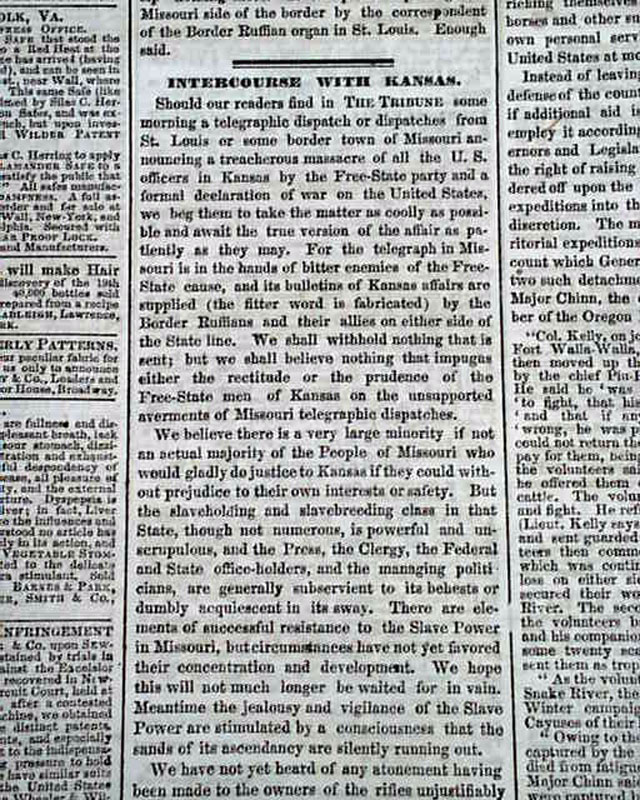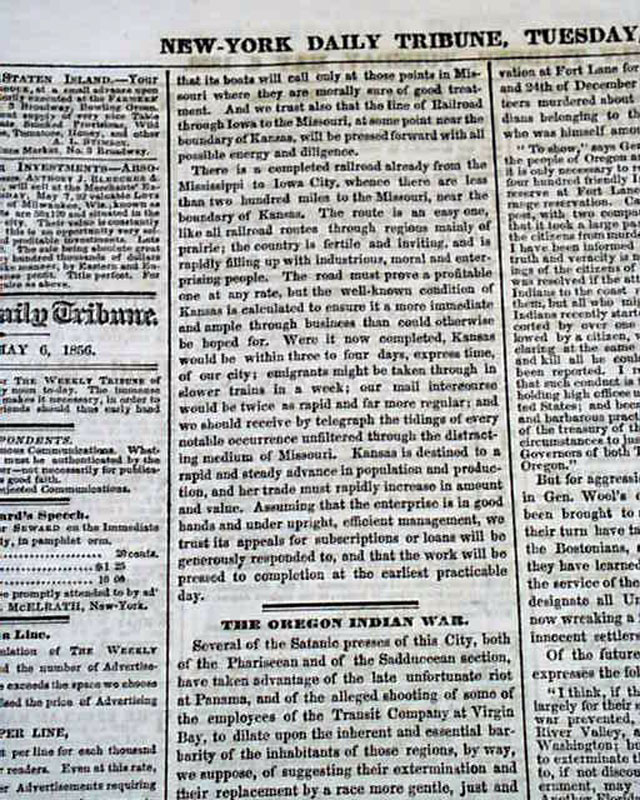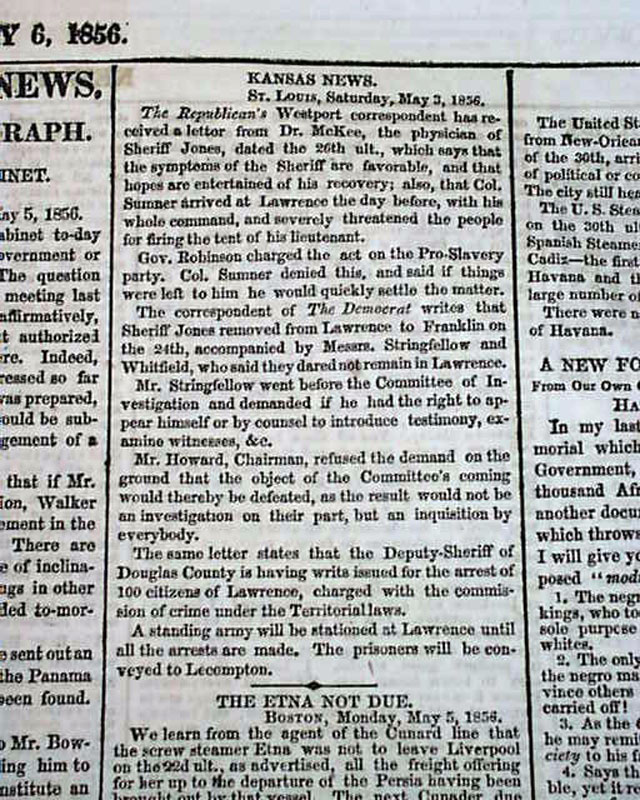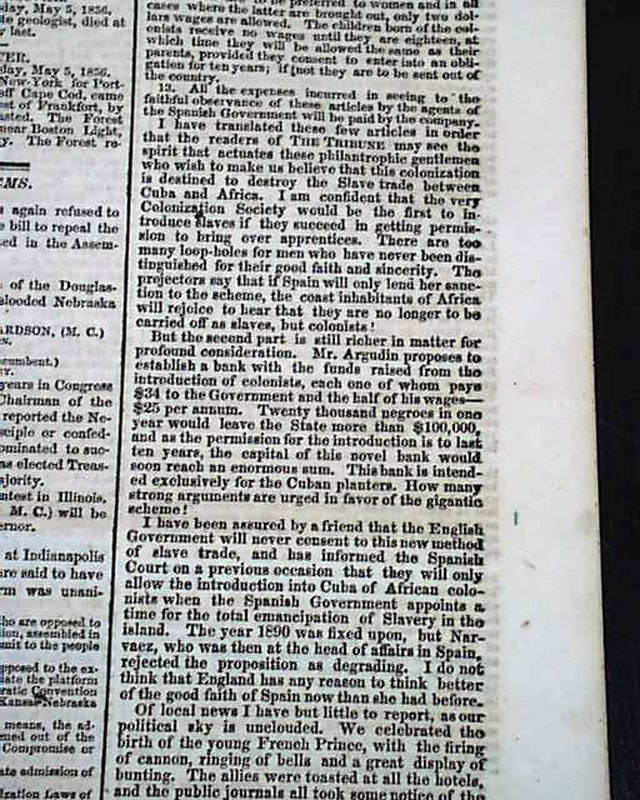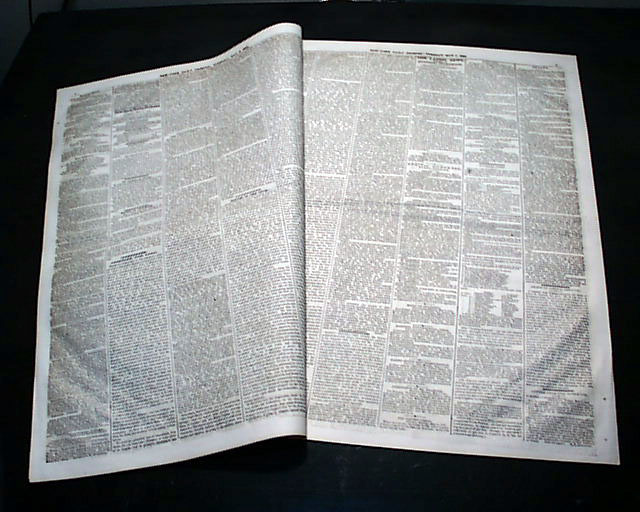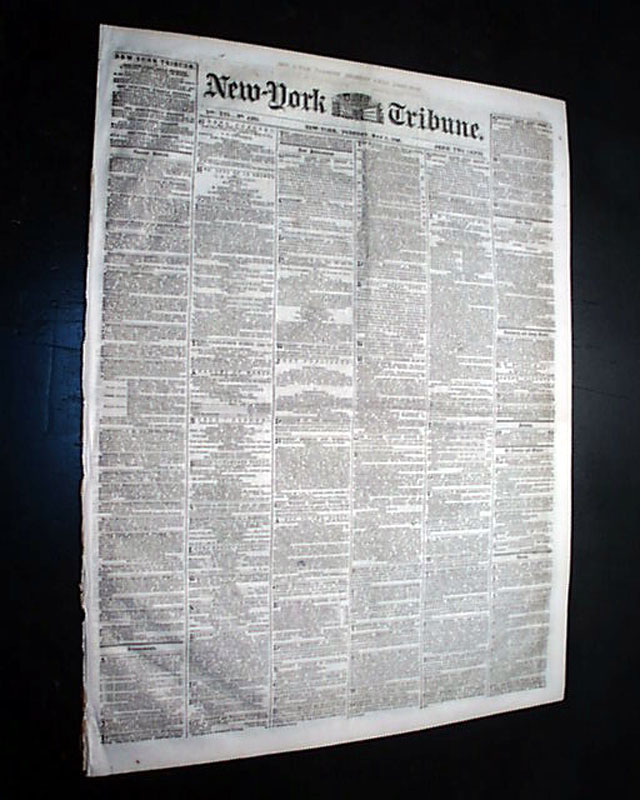Home >
Reporting on 'Bleeding Kansas'...
Reporting on 'Bleeding Kansas'...
Item # 700054
Currently Unavailable. Contact us if you would like to be placed on a want list or to be notified if a similar item is available.
May 06, 1856
NEW YORK TRIBUNE, May 6, 1856
* Bleeding Kansas
* Missouri border invasion
* War on slavery
Pages 4 and 5 have reports concerning the slavery vs. anti-slavery factions in Kansas as they work towards statehood.
Over half a column on page 4 is headed: "Intercourse With Kansas" and page 5 has: "Kansas News". Also on page 5 is: "A New Form Of The Slave Trade" taking over half a column.
Bleeding Kansas describes the period of repeated outbreaks of violent guerrilla warfare between pro-slavery and anti-slavery forces following the creation of the new territory of Kansas in 1854. In all, some 56 people were killed between 1855 and 1859.
Eight pages, very nice condition.
AI notes: In 1856, Bleeding Kansas became a national crisis as violent clashes erupted between pro-slavery and anti-slavery settlers competing for control of the Kansas Territory. Sparked by the Kansas-Nebraska Act of 1854, which allowed settlers to decide the issue of slavery through popular sovereignty, both factions flooded into the territory, hoping to influence the outcome. Tensions exploded when pro-slavery forces attacked and looted the abolitionist town of Lawrence in May 1856, an event known as the Sack of Lawrence. In retaliation, radical abolitionist John Brown led a brutal raid at Pottawatomie Creek, murdering five pro-slavery men in cold blood. These incidents marked a turning point, transforming political disagreement into open violence. The chaos in Kansas mirrored the deepening national divide and even spilled into Congress, where Senator Charles Sumner was savagely beaten by Representative Preston Brooks after delivering an anti-slavery speech. Bleeding Kansas not only exposed the failure of popular sovereignty but also foreshadowed the greater national bloodshed that would erupt in the Civil War just a few years later.
AI notes: In 1856, Bleeding Kansas became a national crisis as violent clashes erupted between pro-slavery and anti-slavery settlers competing for control of the Kansas Territory. Sparked by the Kansas-Nebraska Act of 1854, which allowed settlers to decide the issue of slavery through popular sovereignty, both factions flooded into the territory, hoping to influence the outcome. Tensions exploded when pro-slavery forces attacked and looted the abolitionist town of Lawrence in May 1856, an event known as the Sack of Lawrence. In retaliation, radical abolitionist John Brown led a brutal raid at Pottawatomie Creek, murdering five pro-slavery men in cold blood. These incidents marked a turning point, transforming political disagreement into open violence. The chaos in Kansas mirrored the deepening national divide and even spilled into Congress, where Senator Charles Sumner was savagely beaten by Representative Preston Brooks after delivering an anti-slavery speech. Bleeding Kansas not only exposed the failure of popular sovereignty but also foreshadowed the greater national bloodshed that would erupt in the Civil War just a few years later.
Category: 1857-1860


